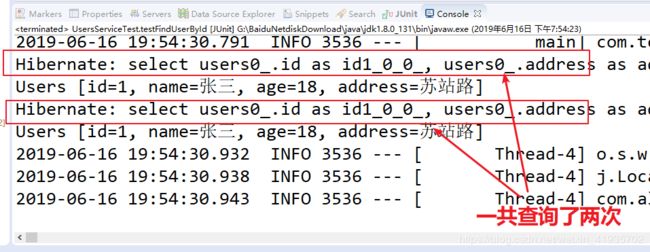一、DNS协议
作用将域名解析为IP 类似于我们只需要知道中央一台,中央二台,而不需要知道它的频率,方便记忆。
java dns 域名解析协议实现
1 域名解析,将域名可转换为ip地址
InetAddress也可以通过使用getAddress()来获得IP地址,但是它的返回值是一个4个字节的数组。
因此尽管getAddress()在获得IP方面是有用的,但却不适于用来输出。
package dns; import java.net.InetAddress; import java.net.UnknownHostException; import java.util.Enumeration; import javax.comm.CommPortIdentifier; import javax.comm.SerialPort; public class NsLookup { public static void main(String[] args){ InetAddress address=null; try { address = InetAddress.getByName(args[0]); } catch (UnknownHostException e) { e.printStackTrace(); } System.out.println(args[0]+": "+address.getHostAddress()); //args[0]是执行程序时写的参数, InetAddress localhost=null; try { localhost = InetAddress.getLocalHost(); //本地地址 } catch (UnknownHostException e) { e.printStackTrace(); } System.out.println("localhost:ip address "+localhost.getHostAddress()); System.out.println("localhost:主机名: "+localhost.getHostName()); /* * 在开始使用RS232端口通讯之前,我们想知道系统有哪些端口是可用的,以下代码列出系统中所有可用的RS232端口 */ CommPortIdentifier portId; Enumeration en = CommPortIdentifier.getPortIdentifiers(); while (en.hasMoreElements()) { portId = (CommPortIdentifier) en.nextElement(); if (portId.getPortType() == CommPortIdentifier.PORT_SERIAL) { System.out.println(portId.getName()); } } } }
执行时命令行参数如果输入:www.sina.com
执行结果如下:
www.sina.com: 121.194.0.209
localhost:ip address 59.64.158.214
localhost:主机名: bupt
COM1
COM2
还有一个域名可能对应不止一个ip地址,一下程序时列举出sina域名下的所有ip
package dns; import java.net.InetAddress; import java.net.UnknownHostException; //有时一个域名会包含不止一个IP地址,比如微软的Web服务器,这是为了保持负载平衡。 //InetAddress提供了一种可以得到一个域名的所有IP地址的方法 public class NsLookup2 { static public void main(String[] args) { try { String name = args[0]; InetAddress[] addresses = InetAddress.getAllByName(name); for (int i = 0; i < addresses.length; i++) { System.out.println(name + "[" + i + "]: "+ addresses[i].getHostAddress()); } } catch (UnknownHostException uhe) { System.err.println("Unable to find: " + args[0]); } } }
执行结果: www.sina.com[0]: 121.194.0.208
www.sina.com[1]: 121.194.0.209
www.sina.com[2]: 121.194.0.210
www.sina.com[3]: 121.194.0.203
www.sina.com[4]: 121.194.0.205
www.sina.com[5]: 121.194.0.206
二、TCP/IP协议
IP 是用来查找地址,对应网际互连层,
IP 负责计算机之间的通信。
IP 负责在因特网上发送和接收数据包。
TCP用来规范传输规则的对应传输层。tcp/ip只是一套规则,并不能具体工作,就像程序中的接口,socket是这套协议的具体实现。
TCP 用于从应用程序到网络的数据传输控制。
TCP 负责在数据传送之前将它们分割为 IP 包,然后在它们到达的时候将它们重组。
三、HTTP协议
http是应用层的协议,tcp/ip接受到数据之后通过htp协议来解析。
HTTP 负责 web 服务器与 web 浏览器之间的通信。
HTTP 用于从 web 客户端(浏览器)向 web 服务器发送请求,并从 web 服务器向 web 客户端返回内容(网页)。
http协议中的报文结构很重要。
1:request message 首行,头部和主体 首行包括请求类型(get,head,post,put,delete),urL 和http版本
2:response 首行包括状态行,状态码(1XX, 2xx成功状态吗,3xx重定向状态吗,4xx:客户端状态吗,为请求到资源,5xx服务器端错误码,500内部错误),简短原因,http版本
四、servlet
是j2ee标准的一部分,是java web 开发的标准,
servlet 是对接收到的数据进行处理并生成结果。
五、SMTP - 简易邮件传输协议(Simple Mail Transfer Protocol)
SMTP 用于电子邮件的传输。
六、IMAP - 因特网消息访问协议(Internet Message Access Protocol)
IMAP 用于存储和取回电子邮件。
七、FTP - 文件传输协议(File Transfer Protocol)
FTP 负责计算机之间的文件传输。
---------------------------------------------------------------------------------------------------------------------------------------------------------------------------------------------------------------------------------
开发中常使用缓存中间件:redis、memcahed、ehcache;
* 缓存:其实就是内存中的一块空间.可以使用缓存将数据源中的数据拿到,存入到内存中.后期获得数据的话 从缓存中进行获得.
* 常见欢送有以下几种
1.EHCache :是Hibernate常使用的二级缓存的插件.
参考https://elim.iteye.com/blog/2123030
a、引入依赖
org.springframework.boot
spring-boot-starter-cache
net.sf.ehcache
ehcache
b、开启基于注解的缓存 @EnableCaching
c、创建Ehcache的配置文件
文件名:ehcache.xml
位置:src/main/resources/ehcache.xml
xsi:noNamespaceSchemaLocation="../config/ehcache.xsd"> <defaultCache maxElementsInMemory="10000" eternal="false" timeToIdleSeconds="120" timeToLiveSeconds="120" maxElementsOnDisk="10000000" diskExpiryThreadIntervalSeconds="120" memoryStoreEvictionPolicy="LRU"> maxElementsInMemory="10000" eternal="false" timeToIdleSeconds="120" timeToLiveSeconds="120" maxElementsOnDisk="10000000" diskExpiryThreadIntervalSeconds="120" memoryStoreEvictionPolicy="LRU">
d、创建application.properties文件(mysql与springDateJpa相关配置)
spring.datasource.driverClassName=com.mysql.jdbc.Driver spring.datasource.url=jdbc:mysql://localhost:3306/demo01?useSSL=false spring.datasource.username=root spring.datasource.password=root spring.datasource.type=com.alibaba.druid.pool.DruidDataSource spring.jpa.hibernate.ddl-auto=update spring.jpa.show-sql=true
spring.cache.ehcache.config=ehcache.xml
MySql在高版本需要指明是否进行SSL连接,这里因为自己的数据库安装的是mysql8.0所以需要加上这个东西,如果用的是mysql5点几版本的朋友可以自行忽略…
SSL协议,当前版本为3.1(SSL3.1就是TLS1.0)。它已被广泛地用于Web浏览器与服务器之间的身份认证和加密数据传输.它位于TCP/IP协议与各种应用层协议之间,为数据通讯提供安全支持
package com.test; import org.junit.Test; import org.junit.runner.RunWith; import org.springframework.beans.factory.annotation.Autowired; import org.springframework.boot.test.context.SpringBootTest; import org.springframework.test.context.junit4.SpringJUnit4ClassRunner; import com.App; import com.entity.Users; import com.service.UsersService; /** * UsersService测试 * * @author Administrator * */ @RunWith(SpringJUnit4ClassRunner.class) @SpringBootTest(classes = App.class) public class UsersServiceTest { @Autowired private UsersService usersService; @Test public void addUser() { Users users=new Users(); users.setId(1); users.setAddress("苏站路"); users.setAge(18); users.setName("张三"); usersService.saveUsers(users); System.out.println("执行完毕"); } @Test public void testFindUserById() { //第一次查询 System.out.println(this.usersService.findUserById(1)); //第二次查询 System.out.println(this.usersService.findUserById(1)); } }
测试结果
第二次测试‘’
这里我们将之前在 UserServiceImpl里面的 @Cacheable(value = “users”)取消注释
再次启动项目测试
第三次测试
修改UsersServiceImpl里面findUserByPage的方法指定为pageable.pageSize,默认的是pageable
修改测试类
新增方法testFindUserByPage
@Test public void testFindUserByPage() { Pageable pageable = new PageRequest(0, 2); // 第一次查询 System.out.println(this.usersService.findUserByPage(pageable).getTotalElements()); // 第二次查询 System.out.println(this.usersService.findUserByPage(pageable).getTotalElements());
测试结果
第四次测试(清除缓存:@CacheEvict)
首先在UsersServiceTest中添加测试方法testFindAll,代码如下
@Test public void testFindAll() { //第一次查询 System.out.println(this.usersService.findUserAll().size()); //添加用户 Users users = new Users(); users.setId(4); users.setAddress("苏站路"); users.setAge(18); users.setName("张三4"); usersService.saveUsers(users); //第二次查询 System.out.println(this.usersService.findUserAll().size()); }
测试结果一:
由于缓存机制的存在,所以数据库的元素改变了,但是我们用的却还是之前缓存的内容,很显然这不合适。如何解决呢,我们修改UsersServiceImpl,在saveUsers上面填上注解@CacheEvict(value=“users”,allEntries=true)
@Override //@CacheEvict(value="users",allEntries=true) 清除缓存中以users缓存策略缓存的对象 @CacheEvict(value="users",allEntries=true) public void saveUsers(Users users) { this.usersRepository.save(users); }
再次测试,结果如下:
2.Memcache :
3.Redis :





